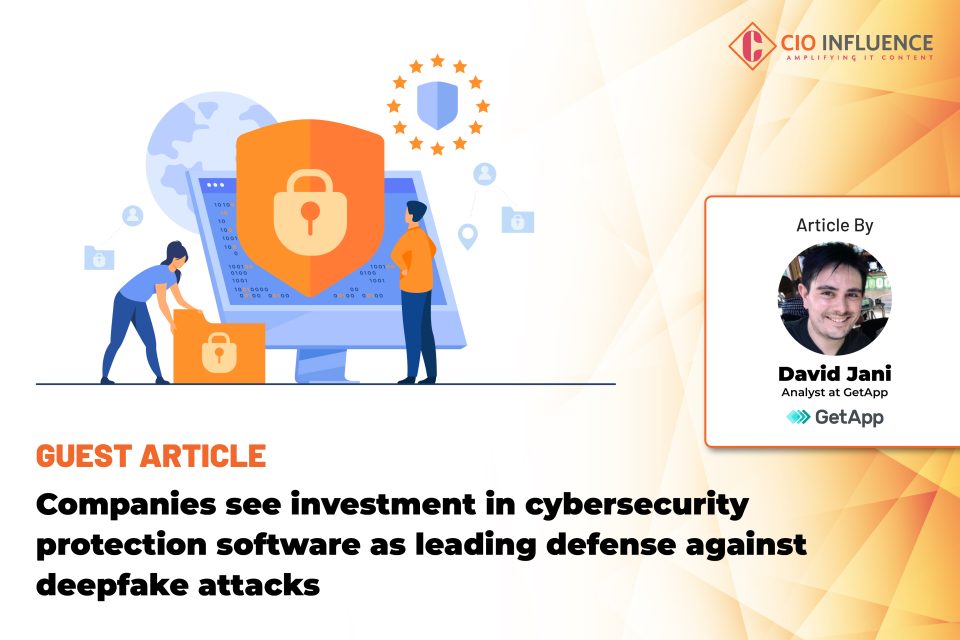The influx of more sophisticated cyberattacks in the form of deepfakes is forcing companies to rapidly adapt to changing times and ramp up their cybersecurity measures
Cyberattacks have long been a persistent threat to businesses, and deepfakes now represent an evolving and more complicated challenge. As a result, companies are prioritizing deepfake response planning and ramping up investment in cybersecurity and network monitoring software to combat these attacks.
GetApp’s Executive Cybersecurity Survey found that 73% of organizations have developed specific measures to counter AI-generated deepfakes, which have the potential to impersonate executives or other decision-making employees. It is imperative for companies to take these safety measures seriously and consistently update their security strategies.
Also Read: CIO Influence Interview with Anuj Jaiswal, Vice President of Products at Fortanix
Deepfake content and impersonation attacks–whether through live videos or other media–are raising concerns from leadership teams. Recently, incidents involving deepfake content related to high-profile figures like presidential candidate Kamala Harris, Elon Musk, and Taylor Swift have sparked debate over parody vs. disinformation. To get ahead of the threat, companies are auditing existing processes and cybersecurity software to decide if such measures are enough to ward off deepfake attacks.
Biometrics face new challenges from AI
For years, biometrics–including fingerprint, facial, and voice recognition–have been a key line of defense in cybersecurity. However, the growing threat of deepfakes has dampened trust when it comes to the reliability of biometrics. Though still an effective defense mechanism, it’s plagued with privacy and ethical issues.
In fact, nearly half (49%) of global IT professionals identify privacy concerns as their biggest challenge when using biometric protections above other potential issues such as data breaches and cost. And 36% of US employees working in companies with biometrics measures in place expressed greatest concern about the threat of deepfakes to compromise biometrics and create synthetic fingerprints, facial images, or voices for ID fraud.
Also Read: Fortifying Security: Lessons from Recent Cybersecurity Attacks
While biometrics remain a powerful tool, they are most effective when used as part of a comprehensive security strategy such as multi-factor authentication and layered defenses to reduce the risk of identity fraud. Hackers responsible for the recent breaches affecting the data of 500 million Ticketmaster users took advantage of this by targeting specific users of one of the company’s cloud providers who had not enforced multi-step authentication access across the board.
Deepfake planning takes precedence
The consensus among US companies is having a plan in place for when deepfakes do arise. Efforts are focused on planning for an attack and having the resources in place to fight it. This is a 360-degree approach, implementing new protocols to address the threat of deepfake attacks with investment in new protection software and practicing response drills. The plan should also include training staff on signs to detect a deepfake attack. Software investments are costly, but as the game is changing it’s important to adapt by implementing tools that have the features necessary to fight such attacks.
Steps to fight against deepfakes
- Develop a response plan for deepfake attacks
- Implement multi-factor security
- Audit network defenses regularly
- Establish a schedule for software updates
- Strengthen password policies
- Provide training to executives and employees
- Encrypt sensitive data
Also Read: How to Balance Trust and Risk in Modern Identity Management
Deepfake threats are here, and the best way for companies to mitigate them is through preparation. By auditing existing security measures, identifying areas for improvement, and investing in the right tools, businesses can stay ahead of these evolving threats.
[To share your insights with us as part of editorial or sponsored content, please write to psen@itechseries.com]


